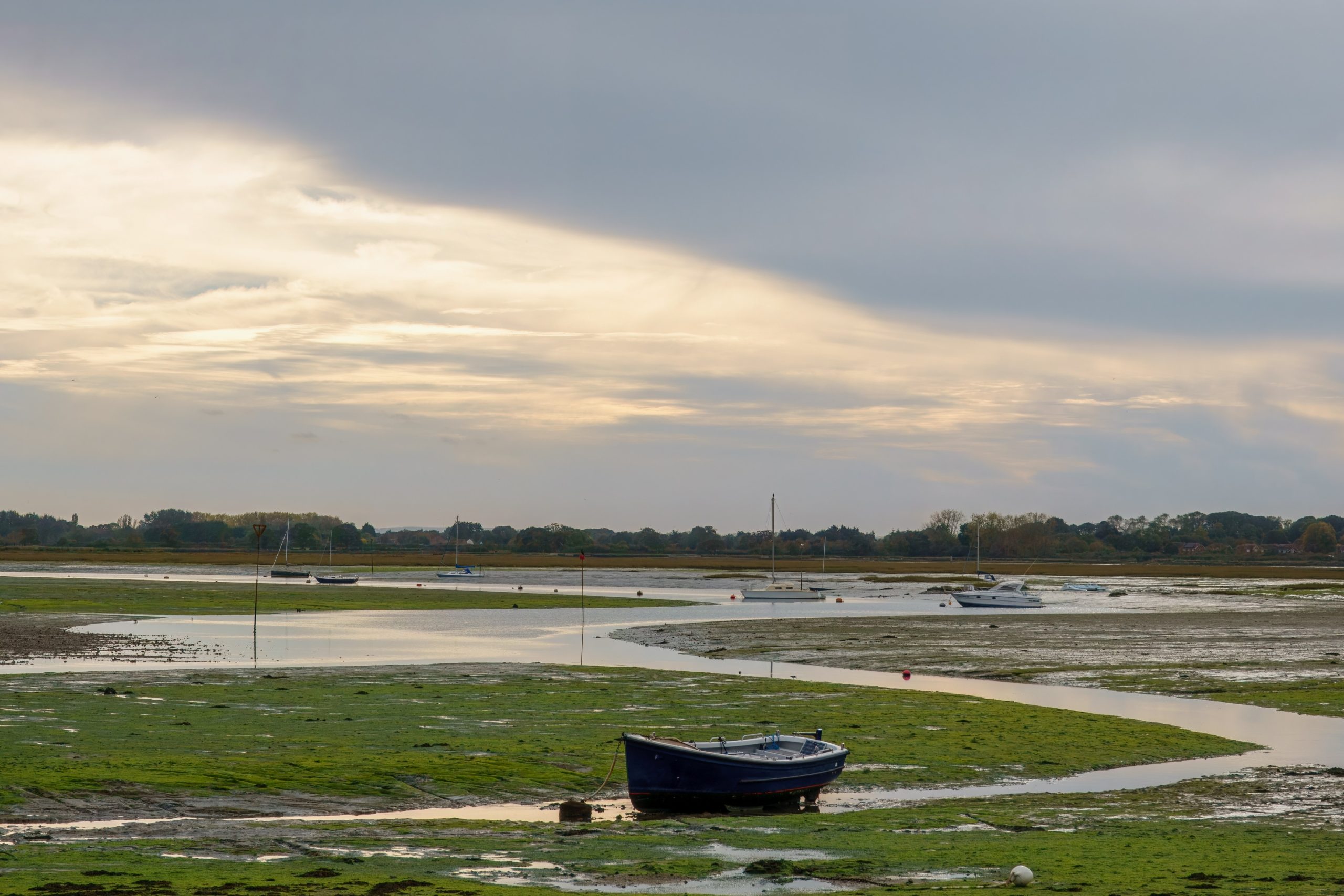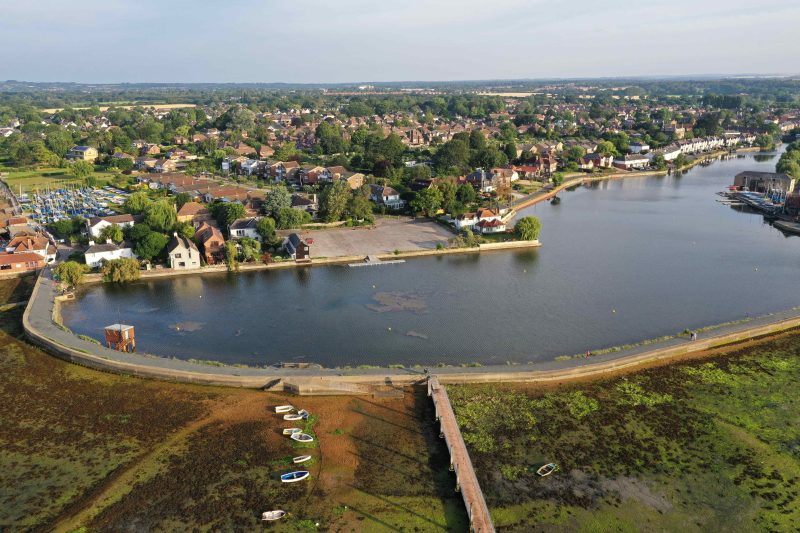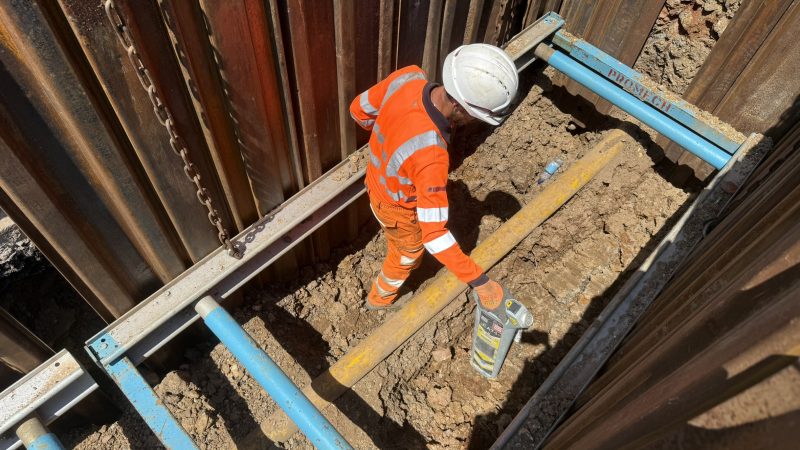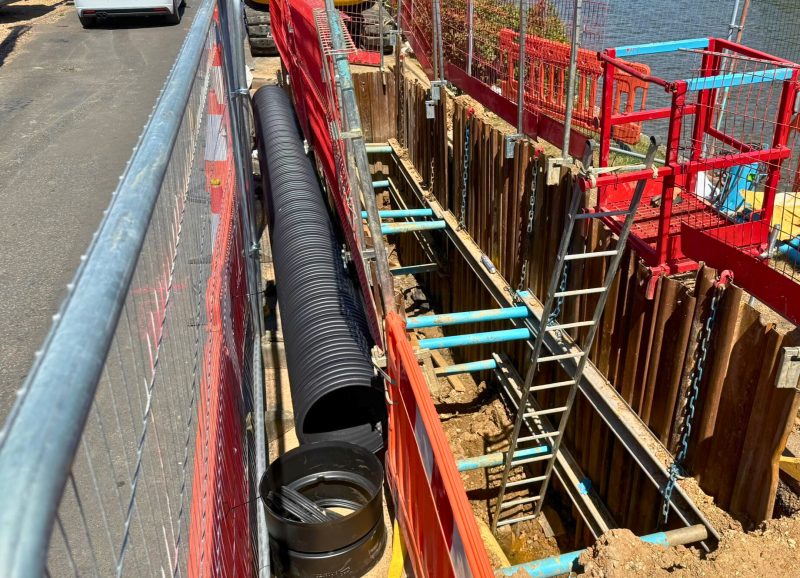Safeguarding Emsworth’s Mill Pond Ecosystem: Pipe Rehabilitation on Bath Road
Category: Case Studies Environment

Introduction
Carried out on behalf of Southern Water the project aimed to restore a 300mm vitrified clay foul sewer suffering from multiple defects—such as fractured sections and a dropped lateral connection—while protecting one of the region’s most ecologically significant water bodies.
A Sensitive Site in a Complex Setting
The rehabilitation work was carried out next to Emsworth Mill Pond, a manmade drainage feature discharging into Chichester Harbour. This harbour is not only internationally protected as a Special Protection Area (SPA) but also designated as a Site of Special Scientific Interest (SSSI). An SSSI is a conservation designation that safeguards areas with unique wildlife, rare species, and distinctive geological features, ensuring that sensitive ecosystems like the adjacent reedbeds and aquatic habitats—home to water voles, wildfowl, yellow oat-grass, and purple toadflax—remain unharmed.

Engineering Challenges in High-Risk Conditions
Conducting excavations on Bath Road presented multiple challenges. The confined space was squeezed between private properties on one side and the watercourse on the other, while underground utilities—such as a live gas main and electrical services—further complicated the task. To navigate these constraints safely, the project team employed vacuum excavation (Vac Ex). This technique efficiently removed the wearing course and exposed underground utilities with minimal disturbance, reducing both vibration and sediment release near the sensitive watercourse.

Trenchless Repair: Minimising Environmental Impact
After safely exposing the damaged pipeline, engineers identified three separate crown failures alongside a dropped lateral connection from an adjacent property. Rather than replacing the entire pipe—which would have necessitated closing Bath Road—the team, working in collaboration with our delivery partners, opted for a trenchless cured-in-place pipe (CIPP) lining method. This technique involved inserting and curing a resin-impregnated liner within the existing pipe to seal cracks and restore structural integrity. The approach precisely addressed the defects while minimising environmental and structural risks, helping to preserve the watercourse’s delicate ecosystem.

Results: Structural Resilience and Habitat Protection
In total, Cappagh Browne restored 11 metres of compromised pipeline, eliminated potential sources of pollution, and prevented future sewer failure—without road closures or extensive disruption to local residents. The trenchless method proved both cost-effective and environmentally protective, upholding the standards required for working near a protected SSSI.
This project not only delivered essential infrastructure resilience but also safeguarded the health of a vital ecological corridor. By combining specialist excavation, engineered trench safety, and minimal-impact rehabilitation, Cappagh Browne working in partnership with Southern Water has ensured that Emsworth’s Mill Pond and surrounding habitats remain undisturbed and protected for the long term.

Category: Case Studies Environment
Location: Hampshire
